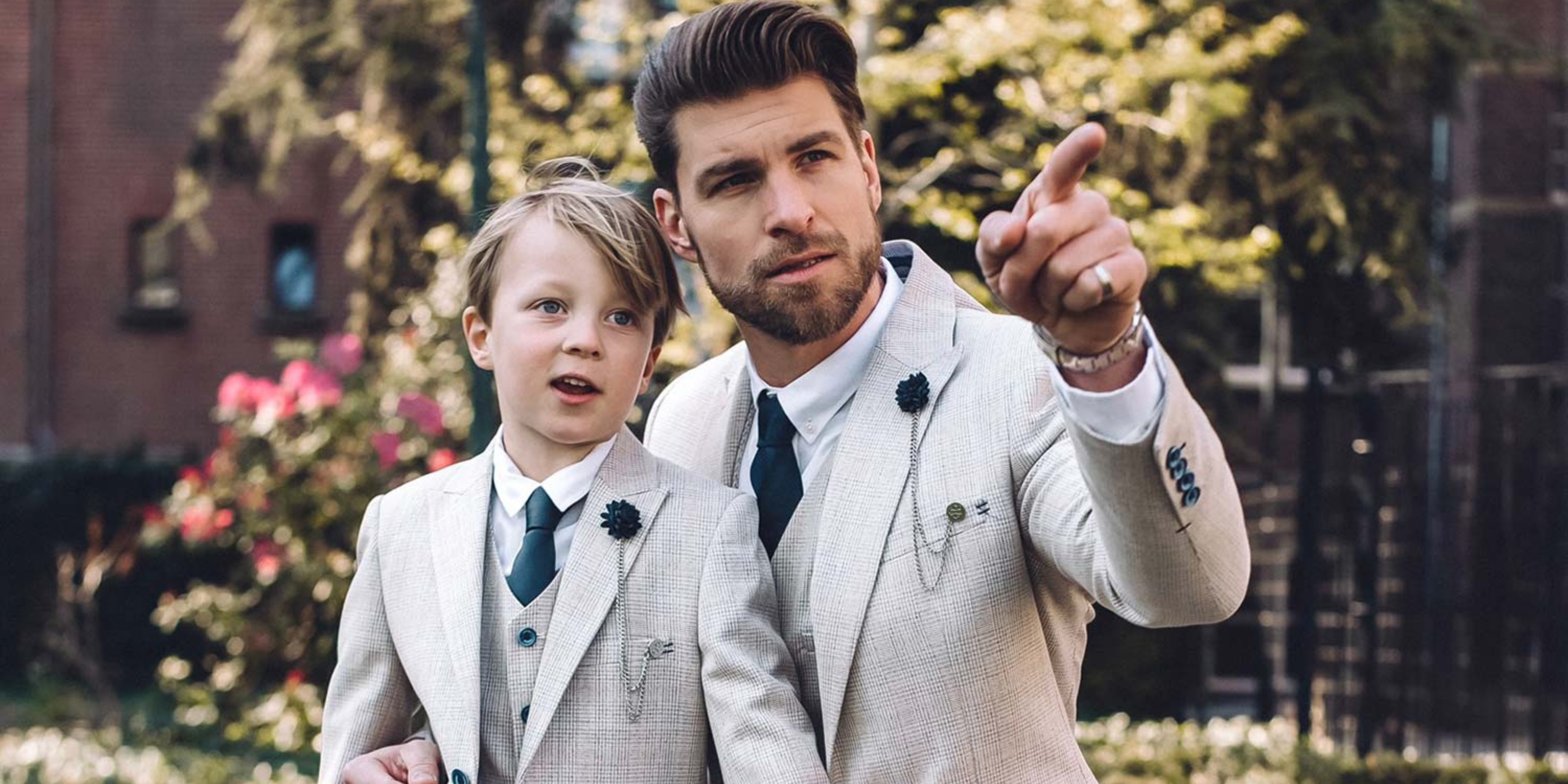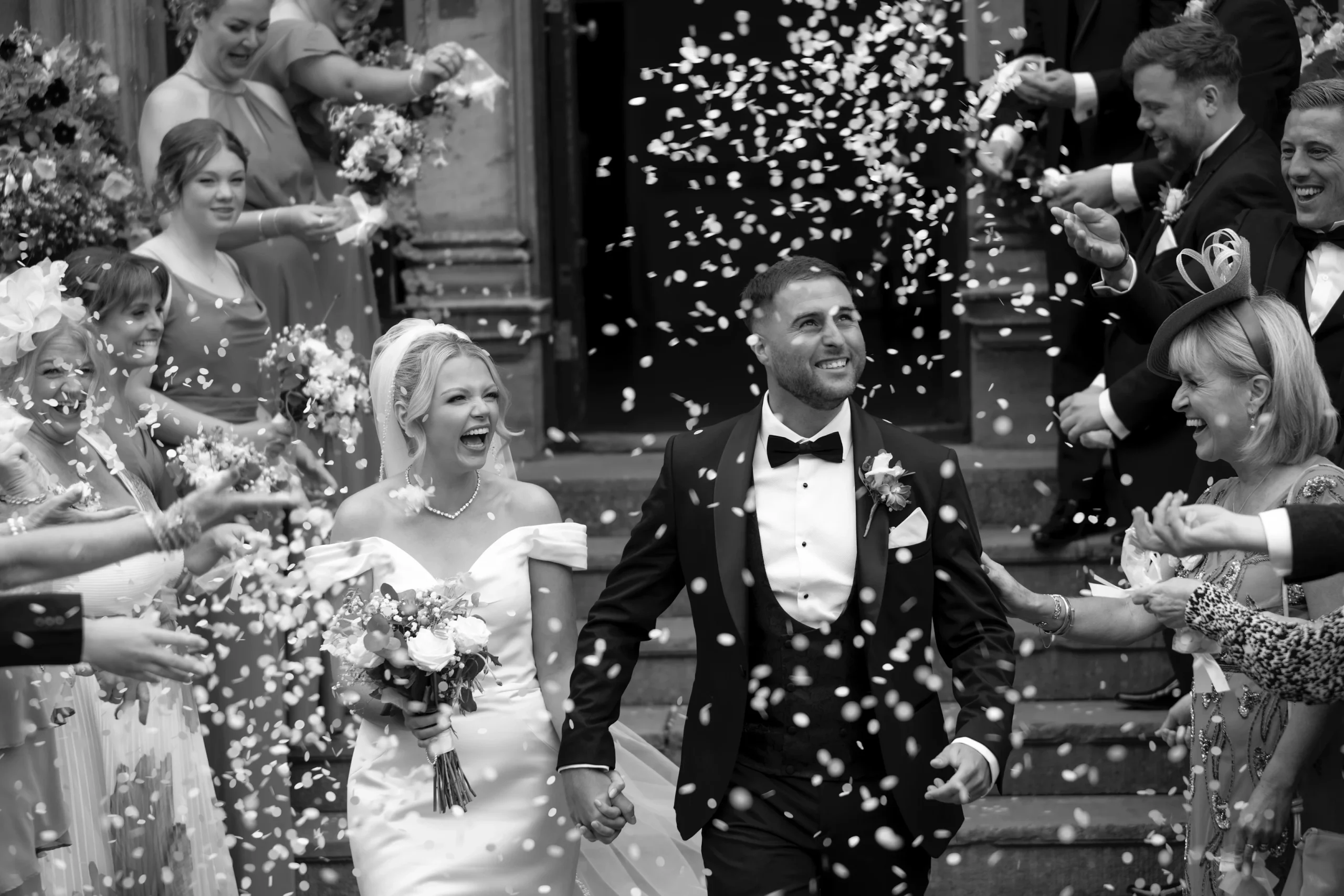Neckwear might seem like a small detail when putting together a formal look, but can play an important role in shaping your outfit.
Whether you’re preparing for a wedding, a black-tie event or a smart-casual dinner, you’ll have one big decision to make: Do you go for a traditional tie, or a less conventional but perhaps more sartorially interesting bow tie?
While both options absolutely have their place in men’s fashion, knowing when and how to wear each is key to nailing your look.
How to Pick the Right Tie for the Occasion
Whether to choose a tie or a bow tie will often come down to the formality of the event, as well as your personal style of course.
Ties are considered the default choice for most professional and semi-formal settings. They add vertical length to the torso, creating a slimming effect and a classic, well-put-together appearance.
Bow ties, on the other hand, are a little more distinctive. They’re associated with formal events and creative personalities, and have just a touch of vintage flair. Bow ties draw more attention and can set you apart, which is perfect if you’re aiming for a unique or dapper vibe.
When to Wear a Bow Tie Instead of a Tie
So, when should you wear a bow tie? The most obvious occasions are formal black-tie events, where a bow tie is often part of the dress code. Think galas, upscale evening weddings and awards ceremonies.
But bow ties aren’t limited to tuxedos. They’re also a strong option for:
- Creative professionals – designers, artists and musicians often wear bow ties to express their personality
- Themed weddings or vintage-inspired events – bow ties complement retro or quirky dress codes perfectly
- Making a statement during smart-casual occasions – a bow tie with a blazer, for example, can be a stylish option for less formal gatherings
The important thing to remember is that bow ties make a statement, so you’ll need to be comfortable with the extra attention they tend to attract. For events that are more traditional or conservative, they may make you stand out more than you’d like.

When to Wear a Tie Instead of a Bow Tie
Ties are your go-to choice for business meetings, job interviews and corporate functions. They convey professionalism and seriousness, and add structure to an outfit.
Ties are also preferred when:
- Attending formal daytime events – such as church services, business lunches, meetings or conferences
- Wearing a suit with narrow lapels or a modern cut – ties tend to work better with sleek, contemporary tailoring
- You want to blend in rather than stand out – ties are expected, conventional and non-disruptive
So, in the debate of when should you wear a bow tie vs. a tie, ties tend to be the safer choice for most events. That necessarily doesn’t mean boring though, as with endless colours, fabrics and patterns to choose from, ties offer plenty of room for personality too.
Choosing the Right Neckwear for Formal and Casual Looks
Different levels of formality call for different types of neckwear.
For formal events:
- Black tie dress code – go for a black bow tie with a tuxedo
- Weddings – either neckwear can work, depending on the dress code and the couple’s vision for the day. For grooms and groomsmen in wedding suits, a matching bow tie or slim tie can elevate the look. Just make sure to coordinate with the colour theme and level of formality
- Business events – opt for a silk tie in solid or muted colours
For casual occasions:
- Ditch the suit jacket and wear a shirt with an open collar – or, for a smart edge, add a knitted tie or casual-patterned bow tie
- Linen or cotton ties, including designs with quirky prints, make great casual accessories
When styling for more relaxed occasions, bow ties can add a fun, polished twist. Meanwhile, a tie will always keep things classic and understated. It’s up to you to choose the look you’re aiming for, or perhaps just based on your mood that day.

What Works Best with Your Suit?
Ultimately, your suit will play a part in determining what neckwear will look best. Different suits pair better with different accessories, and it’s also really important to pay attention to proportion and material.
Here are some tips to remember:
- Slim-fit suits look best with skinny ties or small bow ties
- Classic-fit suits can handle standard-width ties or fuller bow ties
- Three-piece suits give you some room to experiment, where adding a bow tie can be a refreshing change from the norm
When choosing colours, contrast or coordinate with your shirt and suit, but avoid overly matching everything. For example, if your suit is navy and your shirt is white, a burgundy tie or a polka dot bow tie could add some flair.
Fabric also plays a role. Satin and silk work well for formal settings, while wool or knit ties suit colder months or laid-back environments.
If you’re planning your outfit for a wedding, the choice between a tie and a bow tie often comes down to the event’s vibe. It may even come down to location. For example, you might want to ditch neckwear altogether if choosing a suit for an overseas wedding, where the temperature is likely to be hot and it’s a beach-side ceremony. In these exceptional circumstances, you can throw the usual rules out the window and keep things more laid-back, but only of course if that’s the dress code for the day set by the happy couple.
For more conventional weddings, you’ll find that many grooms and their groomsmen are pairing bow ties with their suits. It offers a classic-meets-contemporary look, especially for evening receptions or black-tie weddings. For guests, a tie is usually the best choice unless otherwise specified.


